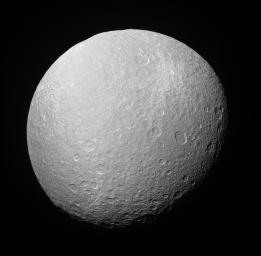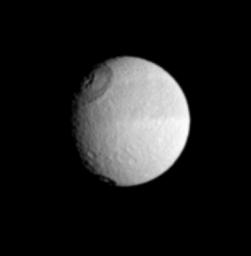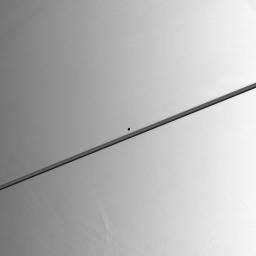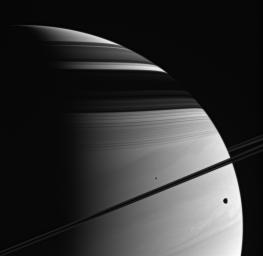New Mimas Image: First Quarter Mimas
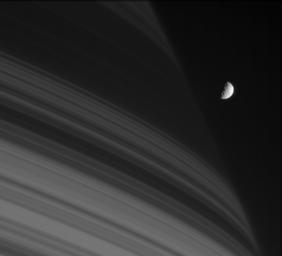
CICLOPS today released this view of Mimas taken on July 18. In this image, Mimas was at half-phase, allowing Cassini scientists to view craters along the terminator even from this distance. In the background is a portion of Saturn's northern hemisphere, shaded by the shadows of its ring system. This image was taken from a distance of 1.6 million kilometers from Mimas and has a scale of 10 km/pixel.

